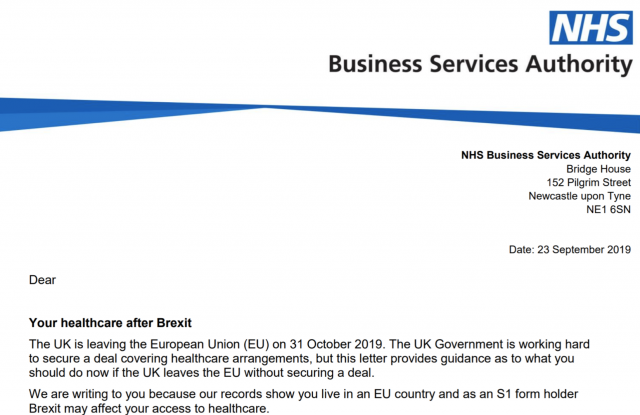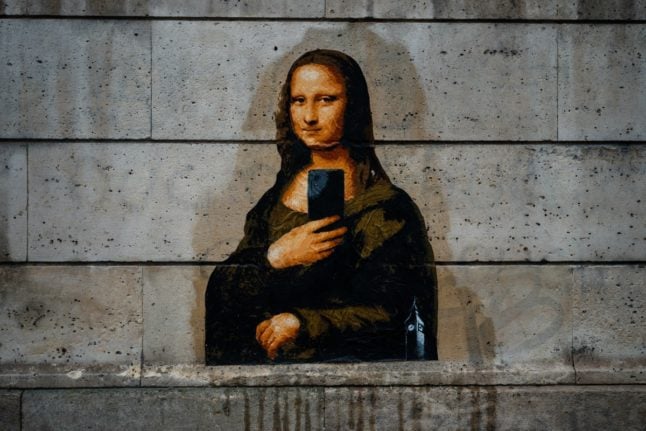You can sign up for the Europe&You newsletter via the blue button at the top right of the screen to keep up to date with all things Brexit and the EU.
Hi readers,
Have you been receiving letters from the British government either urging you to 'get ready for Brexit' or advising you what you need to do to ensure you have health cover in future?
Boris Johnson's government is desperately trying to get word out to the 1.3 million Brits in the EU including 200,000 pensioners that they need to take action to prepare for Brexit on “October 31st”.
“The UK is leaving the European Union (EU) on 31 October 2019,” reads a letter sent from the NHS Business Services Authority that is aimed at warning British pensioners what they need to do to ensure their health costs will be covered in future.
The government announced this week that their healthcare costs would be covered for up to six months in a no-deal Brexit.
“The UK Government is working hard to secure a deal covering healthcare arrangements, but this letter provides guidance as to what you should do now if the UK leaves the EU without securing a deal.”

“You should be ready for possible permanent changes to how you access healthcare if there is a no- deal Brexit,” British pensioners are warned before being advised on what action to take including possibly getting private health insurance.

But the letters are been causing a certain amount of stress for pensioners, many of whom are receiving treatment for serious ongoing health conditions.
The healthcare one is very very unclear and is causing alarm (again!),” Kalba Meadows from British in Europe and France Rights tells The Local.
“It's not at all clear about the six month transitional arrangement and anyone reading it who isn't following the updates is likely to panic when the read this sentence “The UK’s participation in the S1 scheme will continue until at least 31 October 2019.”
“I think it's a great shame – and really concerning – that the government's communications on health care haven't been clearer – it's such a fundamental issue for people, and especially those with serious health conditions, and the Department of Health and Social Care needs to be sensitive to that.
“It should be the UK government's job to inform and communicate – instead we find ourselves doing it for them in order to mitigate the panic and the damage that letters like this are inadvertently doing,” said Meadows.
If you are pensioner on the S1 scheme and haven't yet received a letter from the British government you can read it HERE.
If you wanted to know why the letters and indeed the government's announcement have caused such anger among recipients then our columnist Sue Wilson from Bremain in Spain explains.
“Like thousands of others, I moved to Spain expecting free healthcare for life. I paid into the National Health Service for 38 years. I did not envisage paying for private healthcare or prescription charges in my retirement,” she writes.
“National Health Insurance has that name for a reason. When you pay into an insurance policy for years, you expect payback when it’s required. Whether I spend my retirement in Bradford, Bournemouth or Barcelona should not make any difference to the cover I receive.” For more from Sue Wilson click on the link below.
OPINION: I moved to Spain expecting free health cover for life

All Brits in France and around the EU are also being sent letters from the ambassador telling them to get ready for Brexit. It includes instructions for what to do in the event of a no deal Brexit including that they will need to apply for residency within six months.
And the government is also sending out a third letter outlining that if the UK leaves without a deal, pensions for those in the EU will be uprated for a further 3 years.
Here are three other Brexit related articles from our sites this week that might interest you.
Thanks for reading.
Remember to email me your questions at [email protected]
Ben
Managing Editor, The Local Europe




 Please whitelist us to continue reading.
Please whitelist us to continue reading.
Member comments